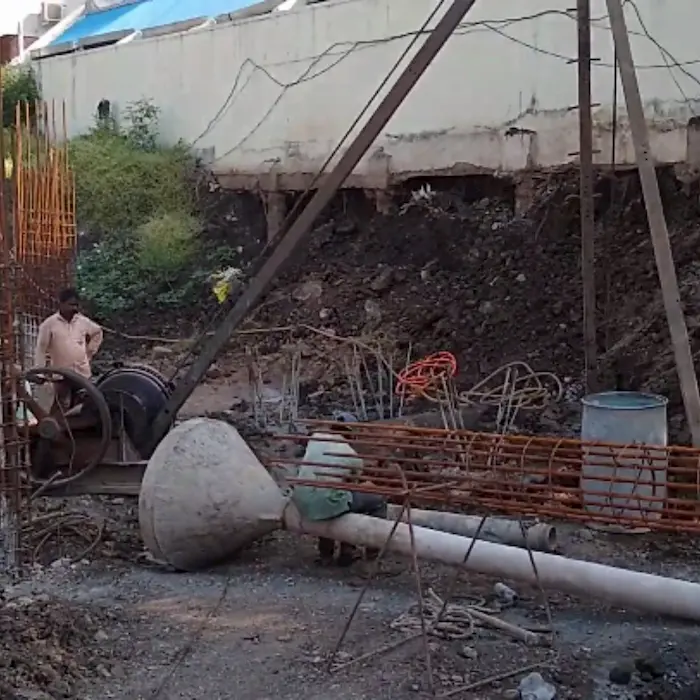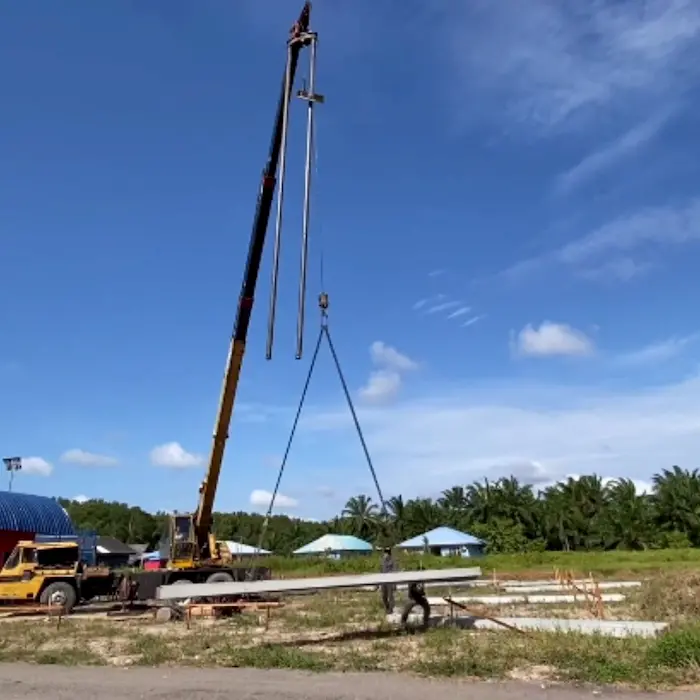A building’s foundation plays an important role in transferring and distributing building loads to the ground in a safe and timely manner. As a rule, pile foundations are used more often when the soil under the foundation has a weak capacity for bearing load and a weak shear strength. As a result, piles are used in such cases in order to transfer the load into deep, strong strata. Today we will learn the Difference Between End Bearing Pile And Friction Pile.
There are two main types of piles, depending on how they transfer load from one place to another: end load-bearing piles and friction piles. In terms of these two piles, there is a huge difference between end bearing and friction piles.
It is for this reason that today we are going to share the difference between bearing pile and friction pile, as well as how they differ. We are going to get started right away, so let’s get started.
What Is End Bearing Pile?

As we go to learn the Difference Between End Bearing Pile And Friction Pile, so let’s start with the end bearing pile. Basically, these piles are used to transfer a load through water or soft soil to a suitable hard bearing stratum that can support the load.
Generally, end bearing piles are used to transfer loads from water or soft soil to a suitable bearing stratum by carrying the load along them. These piles are used to transport heavy loads across hard strata in a safe and reliable manner. As a result, multi-story buildings are always built on end bearing piles, so that the settlement of the building is minimized as much as possible.
It is typical for end bearing piles to be driven through soft soils such as silt-bearing strata underlain by compaction strata, such as loose soil. It is important to keep this factor in mind when determining the amount of load that the pile can safely support.
What Is Friction Pile?

As we compare the Difference Between End Bearing Pile And Friction Pile, so now let’s learn about friction pile. These piles are used to transfer friction loads to a depth by means of friction across the length of the piles that will allow the frictional loads to be transferred to a depth. Friction piles are used to transfer loads to a depth of a friction-load-carrying material as a result of the friction created by the skin gliding across the pile’s length. It is generally said that such piles are used in the case of granular soil where the depth of the hard stratum is extremely high.
There are some piles that transfer the superimposed load through both friction on the sides as well as bearings at the ends. This type of pile is more commonly found in granular soils, especially when the end-bearing piles have to pass through granular soils.
A friction pile is used in the soil of fairly uniform consistency, where the tip is not seated in a hard layer, and the pile’s load-carrying capacity is developed through skin friction. In the soil, the load is transmitted downward and laterally.
Now it is the final time to learn the Difference Between End Bearing Pile And Friction Pile.
Difference Between End Bearing Pile And Friction Pile
By virtue of their cross-sectional bearing capacity, end load-bearing piles resist loads and transmit loads to strong strata. There is a load reaction at the end bearing pile as a result of strong strata.
In contrast, friction piles resist load by developing skin friction on their surfaces. It is not important to consider the cross-sectional resistance in this case. As a result of skin friction, the pile is subjected to a load reaction. This makes the differentiation between end bearing pile and friction pile.
To gain a better understanding of the difference between friction pile and end bearing pile, let’s take a closer look at the following table. This will help us to understand it better.
End Bearing Pile and Friction Pile Difference Table: Difference Between End Bearing Pile And Friction Pile
| End Bearing Pile | Friction Pile |
| 1. Usually, bearing piles are used when piles are used to transfer load from a soft soil stratum to a suitable bearing stratum at a greater depth by transferring load via piles through a soft soil stratum. | 1) A friction pile is one that transfers the loads solely by means of skin resistance without any end bearing, in other words, it transfers the loads by means of skin resistance alone. |
| 2) The hard strata take care of taking the load. | 2) The load is taken by the friction that exists between the sides of the pile and the ground around them. |
| 3) It is essentially necessary to have hard strata. | 3) It is not absolutely necessary to have hard strata. |
| 4) It is used to transfer load through water soft soil in order to make it more efficient. | 4) Through the use of friction, loads can be transferred through a depth of friction. |
Advantages And Disadvantages Of End Bearing Pile
Advantages Of End Bearing Piles
- There are a number of benefits that end bearing piles provide in comparison to other types of pilings, such as friction piles, floating piles, etc.
- End bearing piles do not settle as much as other types of piles, which is why multistory buildings are most commonly built on them. Furthermore, since end bearing piles rest on a firm stratum far below the topsoil, they are considered the strongest type of load-bearing option.
- It is possible to construct end bearing piles offsite and transfer them to the site of construction by precasting them. In addition to saving time, precasting allows for any length, shape, or size of the pile to be specified in advance. Similarly, the cost of construction can be optimized since each pile’s length can be determined based on the depth of the deep stratum on which it will rest.
- Based on soil exploration borehole records, end pile length is easily calculated based on bedrock depth.
- End bearing piles won’t buckle in weak soil, as opposed to other types of piling.
Disadvantages Of End Bearing Pile
There are two main disadvantages associated with end bearing piles:
- A large amount of heavy equipment is required for the installation of end bearing piles. Besides the added costs, it is also necessary to emphasize that in order to install the piles, workers will have to undergo specialized training in order to do so.
- There is a high level of friction around the piling and this makes the soil surrounding the pile stick to the surface of the pile, which decreases its effectiveness because of the high friction.
Advantages And Disadvantages Of Friction Pile
Advantages Friction Pile:
- Friction piles can be used to increase the density and therefore strength of medium- to low-density sands.
- Suitable for heavy loads.
- Suitable for long spans.
Disadvantages Of Friction Piles
- As they require more time to build than flat slabs, they are more complicated to build.
Final Verdict
I hope that after reading this article you have gained a greater understanding of the difference between end bearing pile and friction pile.
As a result of geotechnical investigation, a frictional pile is normally used when the hard strata lie at an unreachable depth and it would be difficult to execute with available equipment of such capacity. Thus, in that case, we provide frictional piles whose purpose is to transfer large structural loads to the soil instead of transferring them to pile ends.
Similarly, when hard strata at a reachable depth are found, we transfer superimposed loads to the end tip of the pile. This type of pile is called an end-bearing pile. So hopefully this guide on the difference between end bearing pile and friction pile helps you to make an informed decision.
Frequently Asked Questions
Where are friction piles used?
These types of foundations are generally used for large structures and situations in which land may be subject to excessive settlement as a result of heavy rainfall. The friction piles develop most of their pile bearing capacity through shear stresses along the sidewalls of the piles, and are suitable for use when hard layers are located too deep to be reached economically with friction piles.
What is the function of end bearing?
It is the role of the big-end bearing to transmit to the crankshaft the torque that is being transmitted to the engine through the connecting rod, which is a result of combustion pressure and inertial imbalance, as well as to transmit the torque that is being transmitted through the connecting rod.
Why are friction piles called floating piles?
The friction pile is also referred to as the floating pile as a result of the fact that the friction piles do not rest over hard strata. So no reaction or resistance is offered by the end-bearing action itself, but rather is dependent on the frictional resistance of the skin.
